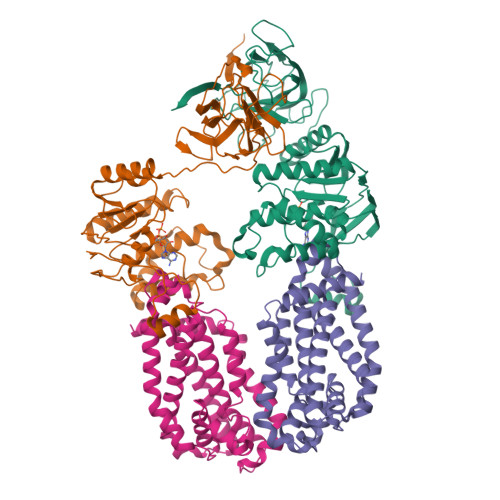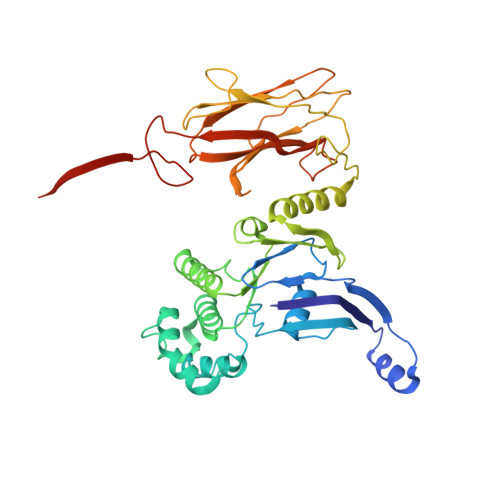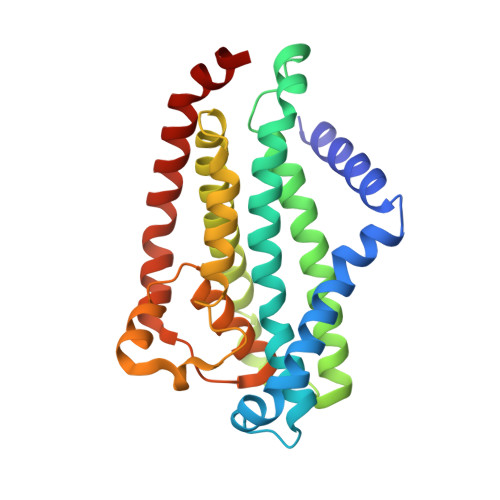Molecular basis for polysaccharide recognition and modulated ATP hydrolysis by the O antigen ABC transporter.
Spellmon, N., Muszynski, A., Gorniak, I., Vlach, J., Hahn, D., Azadi, P., Zimmer, J.(2022) Nat Commun 13: 5226-5226
- PubMed: 36064941
- DOI: https://doi.org/10.1038/s41467-022-32597-2
- Primary Citation of Related Structures:
8DKU, 8DKY, 8DL0, 8DN8, 8DNC, 8DNE, 8DOU - PubMed Abstract:
O antigens are ubiquitous protective extensions of lipopolysaccharides in the extracellular leaflet of the Gram-negative outer membrane. Following biosynthesis in the cytosol, the lipid-linked polysaccharide is transported to the periplasm by the WzmWzt ABC transporter. Often, O antigen secretion requires the chemical modification of its elongating terminus, which the transporter recognizes via a carbohydrate-binding domain (CBD). Here, using components from A. aeolicus, we identify the O antigen structure with methylated mannose or rhamnose as its cap. Crystal and cryo electron microscopy structures reveal how WzmWzt recognizes this cap between its carbohydrate and nucleotide-binding domains in a nucleotide-free state. ATP binding induces drastic conformational changes of its CBD, terminating interactions with the O antigen. ATPase assays and site directed mutagenesis reveal reduced hydrolytic activity upon O antigen binding, likely to facilitate polymer loading into the ABC transporter. Our results elucidate critical steps in the recognition and translocation of polysaccharides by ABC transporters.
Organizational Affiliation:
Howard Hughes Medical Institute, University of Virginia School of Medicine, Charlottesville, VA, USA.




















